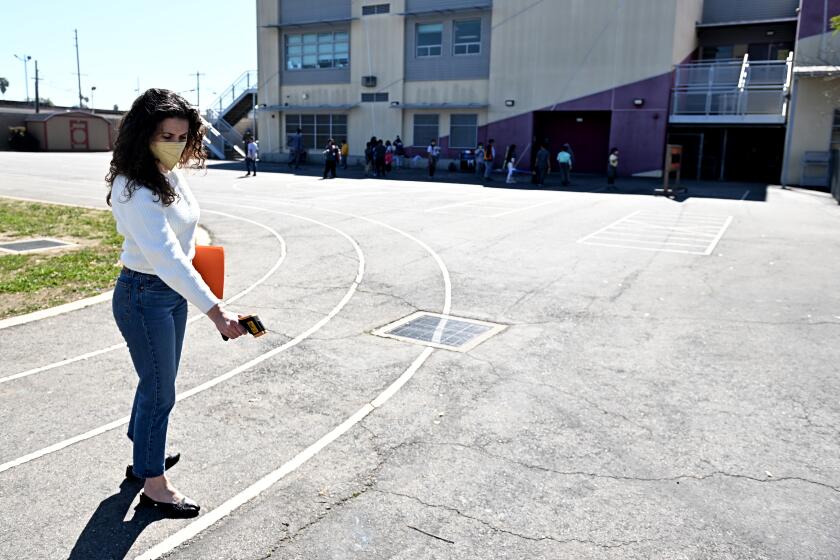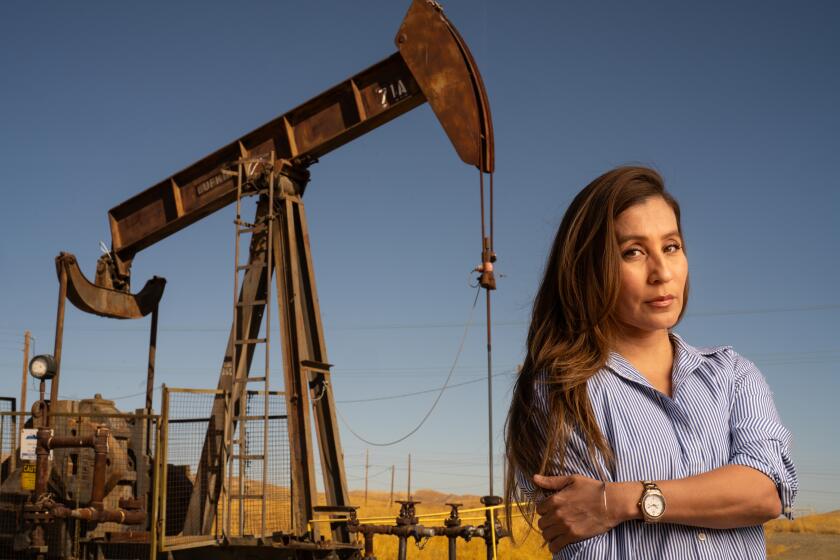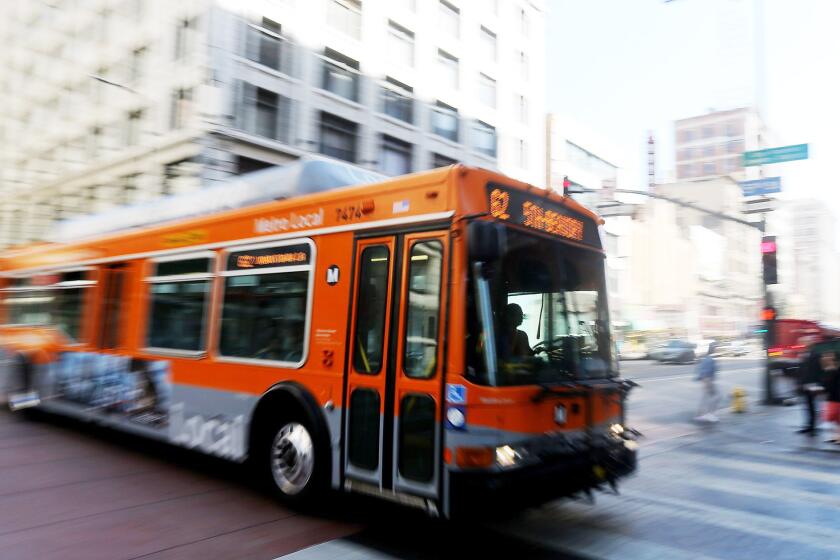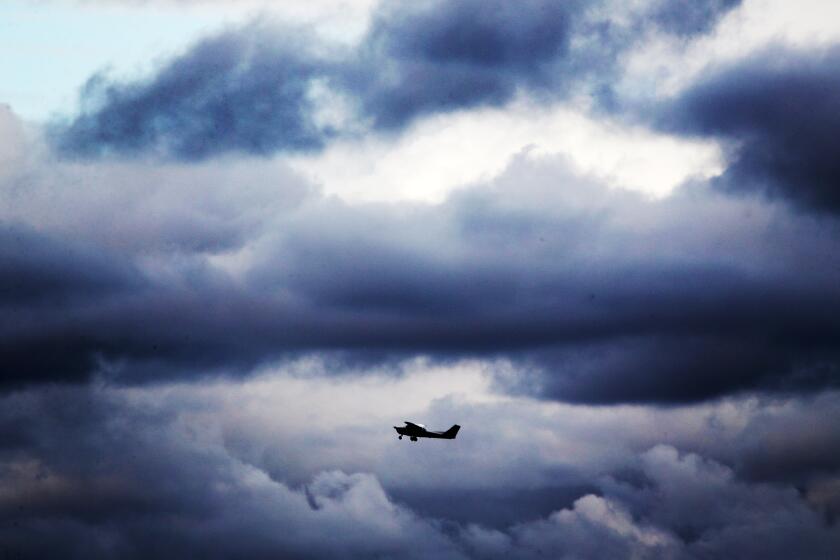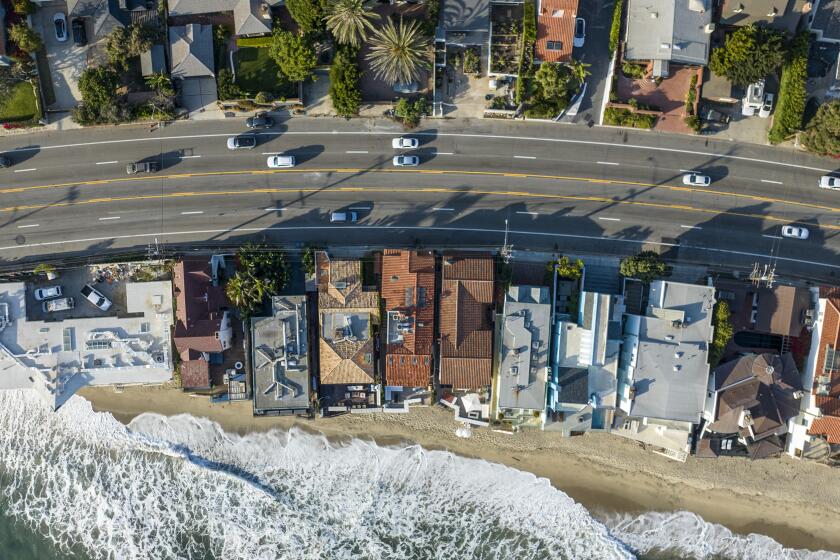Editorial: Trees are essential in a warming world, but L.A. still lags in shade equity
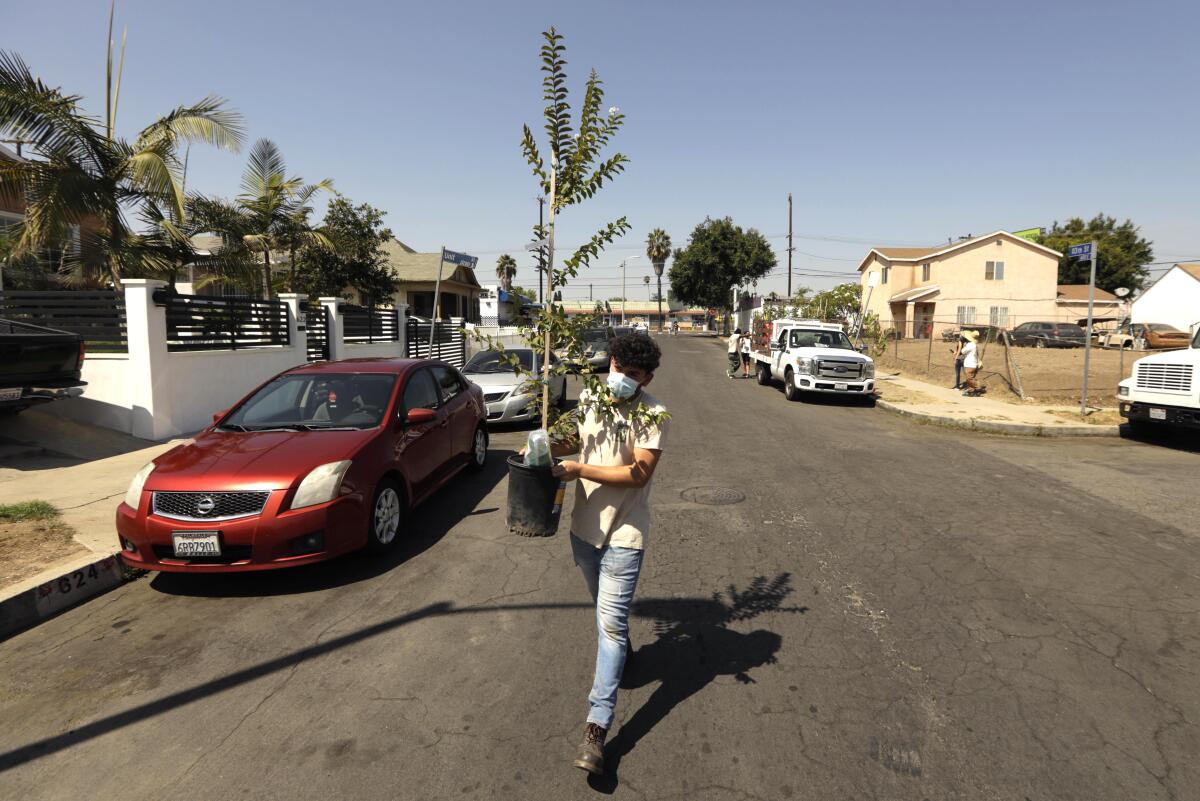
- Share via
With climate change and extreme heat posing increasing risks to the health and safety of everyone, a robust tree canopy to shade homes and streets is more important than ever.
That’s especially true in Los Angeles, a metropolis with dramatic environmental disparities. Wealthy neighborhoods have expansive heat-shielding tree canopies while many low-income neighborhoods have few shade trees and an abundance of heat-absorbing pavement, buildings and surfaces that can raise temperatures by several degrees.
Los Angeles leaders know this and for years made pledges to grow the city’s urban forest, with mixed results.
Children shouldn’t be forced to learn and play in hot, asphalt-covered, fenced-in campuses, especially in neighborhoods that already lack park space.
Mayor Antonio Villaraigosa’s 2006 promise to plant 1 million trees fell about halfway short, and more than 1 in 5 street trees didn’t survive five years, according to a 2014 study.
Mayor Eric Garcetti left office without reaching his goal to “plant and maintain” at least 90,000 trees by 2021. And his plan to “increase tree canopy in areas of greatest need by at least 50% by 2028”? The city has yet to even publicly release a list of the 30 neediest neighborhoods it will prioritize. Meanwhile, it’s unclear whether years of tree-planting projects have offset the dramatic loss of tree canopy coverage researchers have documented across virtually every neighborhood of L.A. due to development and removal.
It’s a shame that efforts to reverse that are moving so slowly and ineffectually. It should be clear by now that adequate tree cover isn’t just some nice-to-have amenity. Trees are essential climate infrastructure to protect residents who are at increased risk of heat-related illness and death simply due to their ZIP Code. Just like air conditioning, solar-reflective roofs and parks, tree cover is something all Angelenos need and deserve to stay cool and safe in a rapidly warming world.
I went to Coalinga and Huron to hear out the head of an oil industry campaign targeting Latinos. I didn’t find opposition to California’s climate policies the oil lobby is peddling.
The barriers to expanding the city’s urban forest are many, from insufficient funding for watering, trimming and maintenance to poor community communication and support.
But we can do better, and this is the right time to chart a new course. Under Mayor Karen Bass, the city is nearing completion of its first citywide inventory of trees along city streets and parks since the late 1990s, which catalogs existing trees as well as vacant spaces where they could be planted. Officials also are developing an Urban Forestry Management Plan that’s expected to contain additional goals, such as the minimum level of tree cover Angelenos should expect.
That’s a more meaningful metric than past efforts that have focused on planting an impressive-sounding but ultimately arbitrary number of trees. What good is getting 90,000 or 1 million trees in the ground if you don’t provide the support they need to survive to maturity?
Metro now has 40 miles of bus lanes in Los Angeles, with plans to reach 100 miles in the next few years. Getting buses out of traffic make service faster, more reliable and better for riders.
Trees need regular trimming, care and maintenance, including weekly watering for the first five years until they are able to survive on their own, but in many cases that just isn’t happening. The city’s current budget only allows for tree trimming every 18 to 20 years, when the industry standard is every five to seven.
While the average tree canopy citywide is about 21%, there are stark disparities that run along lines of race and class. Some areas of the city have more than 30% coverage while others have as little as 5%. Black, Asian, Latino and low-income Angelenos are more likely to live in these shade-poor and hotter communities. This divide is the legacy of decades of bad decisions, environmental racism that sited polluting industrial facilities and freeways instead of parks in communities of color and discriminatory redlining policies that steered investment away.
One immediate solution is to increase the budget for tree planting and maintenance and dedicate a larger share to the communities that need shade trees the most, neighborhoods like Pacoima and Watts. It can be more expensive to plant trees in those areas because they often have narrow or nonexistent parkways and crews may have to cut out concrete or extend the curb to make room for large trees that provide the shade and cooling residents need.
But it’s worth the cost and effort. Robust tree coverage can save lives. Trees help improve air quality and can cool the air by as much as 10 degrees, making the difference between someone surviving or succumbing to a major heat wave, like the one in September 2022 that killed an estimated 317 people in Los Angeles, Orange, San Diego, Santa Barbara and Ventura counties.
Lead is unsafe at any level and was phased out of gasoline decades ago. But it’s still being spewed into the air at general aviation airports across the country. It’s past time to stop using it as fuel for small piston-engine aircraft too.
The way the city engages with community members about trees also needs an overhaul. There is no consistent practice on who will water street trees — the city or residents — for the first few years while they establish roots.
It is a waste of money for the city to plant trees in neighborhoods, then walk away and leave residents with the responsibility of keeping them alive. We don’t spend the money to build sewer systems, water mains or power lines without also investing in ongoing maintenance to make sure they serve their function for as long as possible. Why should trees be any different?
Residents often complain about city crews digging into the soil next to their homes and planting trees without contacting them first. And communities with a history of insufficient city services are understandably skeptical about receiving new trees based on well-founded concerns that they won’t be cared for. Tree-planting projects must involve residents in the selection and care of the trees, followed by years of support to keep them alive.
PCH through this coastal city should be remade into a boulevard, where drivers are forced to slow down and it’s safer for pedestrians, cyclists and other drivers to get around town.
Bass and the City Council should make a new promise to Angelenos to expand the city’s shade canopy over the coming years and decades, this time prioritizing quality over quantity and focusing on shade-poor communities. The dramatic inequity in L.A.’s tree canopy is a pernicious environmental injustice and requires focused and sustained city investment to begin to make right.
The initial costs will pay dividends by helping neighborhoods become more resilient to the growing effects of climate change.
More to Read
A cure for the common opinion
Get thought-provoking perspectives with our weekly newsletter.
You may occasionally receive promotional content from the Los Angeles Times.
